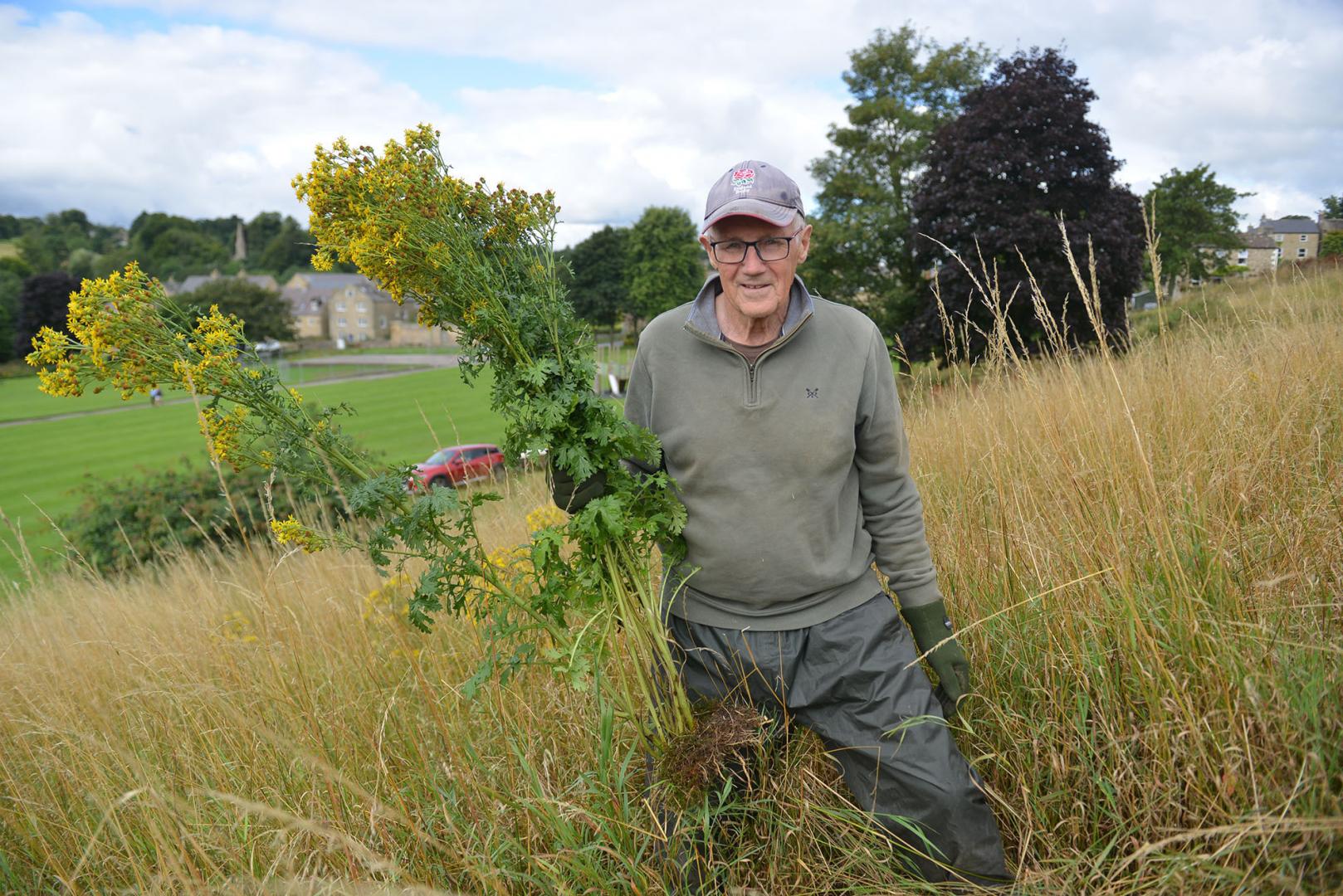VOLUNTEERS descended on Barnard Castle’s lower Demesnes to pull out poisonous weeds.
The small group of the town’s volunteer workers uprooted several dumpy bags of noxious ragwort in an effort to control the spread of the invasive species, which is dangerous to humans and animals alike.
Volunteer co-ordinator Roger Peat said they were focussing on the hillside between the upper and lower demesnes where the plant was growing in abundance.
He added that although the hillside had not been cleared for a few years, the wildflower meadow on the upper Demesnes is removed regularly to prevent the weed from getting into the hay when it is harvested.
He said: “We have to be careful so we are wearing gloves and our arms are covered when we are pulling it otherwise it could be dangerous for us handling it.”
Mr Peat’s brother David, who is a former veterinary surgeon, described its impact on grazing animals: “They will graze it particularly when it is dead – it is more palatable for an animal when it is dead. It is horses in particular and they are more susceptible to it. It causes serious liver damage.
“The odd thing is that it is accumulative so even if they feed on a little of it over a long time it still has a toxic effect.”
Plant enthusiast and chairman of Trees For Teesdale Geoff King blamed the Victorians for the spread of the weed.
He said: “It is pretty and the Victorians brought anything [to England] that they thought they didn’t have and might be pretty in their gardens.”
The same, he said, was for Japanese knotweed and giant hogweed.
The Ragwort Control Act of 2003 states that landowners should remove ragwort from their fields.
ADVERTISEMENT
Volunteers go into battle against noxious invader on beauty spot
ADVERTISEMENT
ADVERTISEMENT
ADVERTISEMENT






